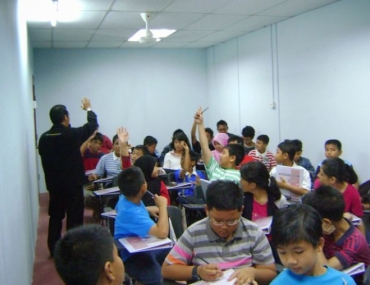Online tuition, commonly referred to as "tuisyen" in Malaysian and Southeast Asian contexts, has experienced remarkable growth over the past decade, with the COVID-19 pandemic serving as a significant accelerant for its adoption and expansion. The transformation from traditional face-to-face tutoring to digital platforms represents a fundamental shift in how students access supplementary education and how tutors deliver personalized instruction.
The Growth of Shadow Education
Online tutoring belongs to what education researchers call "shadow education" or supplementary tutoring services. This sector has experienced substantial growth globally, driven by several interconnected factors. The development of information technology during the fourth industrial revolution has particularly promoted the growth of the education industry in Southeast Asia and beyond, with online tutoring platforms emerging as key players in this transformation. The increasing accessibility of internet connectivity and the proliferation of digital devices have made private tutoring services more reachable to wider populations than ever before (Seah et al., 2023).
The COVID-19 Catalyst
The COVID-19 pandemic fundamentally accelerated the adoption of online tutoring services. When schools closed worldwide in 2020, demand for online education surged dramatically. This global public health crisis acted as a catalyst for online education adoption, transforming it from a niche offering into a mainstream educational delivery method. What might have taken years to achieve through gradual market adoption happened almost overnight as schools, families, and students had no choice but to embrace digital learning (Huang, 2020).
During the pandemic, educational institutions faced unprecedented challenges. Unlike traditional classroom learning, online platforms enabled continued access to instruction during lockdowns, and research demonstrates that remote tutoring interventions proved highly effective in supporting student learning. Studies from various countries showed that students receiving online tutoring during pandemic-related school closures improved academic performance by significant margins, with some programs showing improvements of 0.26 to 0.48 standard deviations in test scores and grades (Carlana & La Ferrara, 2021).
Technology-Driven Transformation
The technological infrastructure supporting online tutoring has become increasingly sophisticated. Modern platforms leverage advanced technologies including artificial intelligence, machine learning, cloud computing, and natural language processing to create personalized learning experiences. These technologies enable platforms to efficiently match tutors with students, automatically adjust difficulty levels based on student performance, and provide real-time feedback (Saravanan & Arockiamary, 2024).
Artificial intelligence has become particularly transformative in this space. AI-powered tutoring systems can now adapt to individual student needs, providing customized instruction based on each learner's strengths, weaknesses, and learning style preferences. These intelligent tutoring systems (ITS) have shown promise in improving student engagement and academic performance across diverse learner populations, including students with learning disabilities and student-athletes balancing academic and athletic responsibilities (Chen et al., 2023).
Meeting Educational Affordability Challenges
A significant driver of online tutoring growth has been the persistent challenge of educational affordability and quality concerns in traditional education systems. Research from Indonesia reveals that public mistrust in the quality of education provided by formal schools has contributed substantially to the rise of online tutoring services at the elementary school level. This phenomenon reflects broader concerns across Southeast Asia and beyond, where families seek supplementary instruction to ensure their children acquire skills beyond standard classroom learning.
Online tutoring platforms have democratized access to quality instruction by offering flexible, scalable solutions that can reach students regardless of geographic location. This accessibility is particularly valuable in developing nations where geographic barriers and limited access to qualified tutors previously restricted educational opportunities.
Effectiveness and Student Outcomes
Research increasingly demonstrates that online tutoring can be highly effective when designed properly. Randomized controlled trials have shown that online tutoring programs significantly improve student academic performance. Programs targeting disadvantaged students have documented substantial improvements in standardized test scores, end-of-year grades, and reduced rates of grade repetition. Beyond academic metrics, studies show that well-designed online tutoring also improves students' socio-emotional skills, educational aspirations, and psychological well-being (Gortazar et al., 2023).
In higher education contexts, peer tutoring delivered remotely has similarly proven effective. Students who participated in online tutoring achieved approximately 30% more credits and attained grade point averages one level higher than comparison groups, suggesting that online tutoring can reduce outcome inequality (Hardt et al., 2022).
Personalization and Adaptive Learning
One of online tutoring's most powerful advantages is the ability to provide highly personalized instruction tailored to individual student needs. Unlike traditional classroom settings with fixed pacing, online platforms can adapt content delivery to match each student's comprehension level and learning preferences. This personalization becomes possible through continuous data collection and analysis during tutoring sessions, allowing systems to identify knowledge gaps and adjust instructional strategies accordingly (Ahmed, 2024).
Self-regulation of learning a critical skill for academic success can be effectively supported through well-designed online tutoring platforms, particularly intelligent tutoring systems that provide appropriate scaffolding and feedback.
The Tutor's Evolving Role
The transition to online tutoring has transformed the tutor's role and required new competencies. Online tutors require not only subject-matter expertise but also technological skills and specific communication abilities suited to virtual environments. Research on online tutors reveals that communication self-efficacy tutors' confidence in their ability to communicate effectively—significantly influences their adoption and effectiveness with online teaching platforms (Izhar et al., 2025).
Interestingly, research on online tutoring marketplaces shows that tutors increasingly leverage their institutional affiliations and academic credentials as marketing differentiators, recognizing that institutional affiliation serves as a powerful signal of competence and credibility to prospective students.
Market Dynamics and Platform Growth
The online tutoring services market has experienced rapid expansion driven by technological improvements and growing consumer demand. Digital platforms supporting tutoring services have become increasingly sophisticated at matching tutors with students, enabling real-time learning interactions across geographic boundaries. These platforms typically operate on a gig economy model, providing flexible work opportunities for tutors while offering students access to diverse instructor options (Saravanan & Arockiamary, 2024).
The competitive dynamics of online tutoring marketplaces have intensified, with platforms competing on user interface design, tutor quality, pricing strategies, and specialized subject offerings. This competition has generally benefited consumers through improved services and increasingly competitive pricing.
Challenges and Considerations
Despite substantial progress, online tutoring continues to face challenges that require ongoing attention. Technology adoption barriers persist among some tutors and students, with factors like internet connectivity, device availability, and digital literacy affecting accessibility. Pedagogical challenges include maintaining student engagement in virtual environments and ensuring that online instruction achieves comparable learning outcomes to high-quality in-person tutoring (Vlachopoulos & Makri, 2021).
Privacy and data security concerns have emerged as online platforms collect increasingly detailed information about student learning patterns and performance. Additionally, ensuring equitable access across socioeconomic groups remains critical, as students from lower-income backgrounds may face barriers to online tutoring adoption despite its potential to democratize educational access.
The Post-Pandemic Landscape
The transition to online learning during COVID-19 was initially conceived as an emergency response, but evidence suggests that online tutoring will remain a significant component of education infrastructure going forward. Research on prospective teachers indicates growing acceptance of remote online education as a valid delivery method for future practice. However, maintaining the quality of online education and ensuring it remains complementary to traditional instruction rather than a complete replacement remains an ongoing consideration (Shafie et al., 2021).
As internet penetration continues to grow globally and digital literacy improves across populations, online tutoring is positioned for continued expansion. The integration of emerging technologies like artificial intelligence, along with increasingly sophisticated pedagogical approaches tailored to online environments, suggests that the sector will continue evolving to meet diverse learner needs.
Conclusion
The rise of online tuition represents far more than a technological shift; it reflects fundamental changes in how education is accessed, delivered, and experienced. From addressing educational affordability concerns to enabling personalized learning at scale, online tutoring has emerged as a transformative force in supplementary education. While challenges remain regarding access equity, technology adoption, and ensuring quality instruction, the evidence supporting online tutoring's effectiveness continues to strengthen. As digital literacy expands globally and technology becomes increasingly integral to education, online tuition is likely to remain a central feature of the educational landscape for decades to come.
Sources:
Ahmed, E. (2024). Student performance prediction using machine learning algorithms. Applied Computational Intelligence and Soft Computing, 2024(1). https://doi.org/10.1155/2024/4067721
Carlana, M., & La Ferrara, E. (2021). Apart but Connected: Online Tutoring and Student Outcomes during the COVID-19 Pandemic. SSRN Electronic Journal. https://doi.org/10.2139/ssrn.3777556
Chen, A., Liu, H., Li, K., & Jia, J. (2023). For Educational Inclusiveness: Design and implementation of an intelligent tutoring System for Student-Athletes based on Self-Determination Theory. Sustainability, 15(20), 14709. https://doi.org/10.3390/su152014709
Gortazar, L., Hupkau, C., & Roldán, A. (2023). Online Tutoring Works: Experimental Evidence from a Program with Vulnerable Children. SSRN Electronic Journal. https://doi.org/10.2139/ssrn.4390248
Hardt, D., Nagler, M., & Rincke, J. (2022). Tutoring in (Online) Higher Education: Experimental evidence. SSRN Electronic Journal. https://doi.org/10.2139/ssrn.4031193
Huang, H. (2020). Analysis on current situation and forecast of Chinese online education industry. E3S Web of Conferences, 218, 04005. https://doi.org/10.1051/e3sconf/202021804005
Izhar, N. A., Syahirah, A., Tinakaran, K., & Chong, L. P. (2025). CONTEXTUALIZING FACTORS INFLUENCING TUTORS’ ADOPTION OF ONLINE TUTORING BASED ON TECHNOLOGY ACCEPTANCE MODEL. Turkish Online Journal of Distance Education, 26(4), 149–171. https://doi.org/10.17718/tojde.1585930
Saravanan, A., & Arockiamary, R. (2024). THE ROLE OF TECHNOLOGY IN THE GROWTH OF THE GIG ECONOMY PERTAINING TO ONLINE TUTORING SERIVES. ShodhKosh Journal of Visual and Performing Arts, 5(6). https://doi.org/10.29121/shodhkosh.v5.i6.2024.2828
Seah, J. A., Sidabutar, G. D. G. E., Christian, R., Tjhang, S. B., Kristian, Y., & Singgalen, Y. A. (2023). Elevating “TutorYuk” online peer tutoring services through Information System: A Design Thinking Framework approach. Journal of Information Systems and Informatics, 5(3), 956–970. https://doi.org/10.51519/journalisi.v5i3.523
Shafie, I. S. M., Fikry, A., Hamzah, M. I., Mahamood, S. F., & Saputra, M. M. D. H. (2021). A Systematic Review of youth online learning in ASEAN countries. International Journal of Academic Research in Business and Social Sciences, 11(8). https://doi.org/10.6007/ijarbss/v11-i8/10771
Vlachopoulos, D., & Makri, A. (2021). Quality Teaching in Online Higher Education: The Perspectives of 250 Online tutors on Technology and Pedagogy. International Journal of Emerging Technologies in Learning (iJET), 16(06), 40. https://doi.org/10.3991/ijet.v16i06.20173





